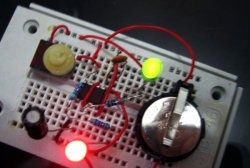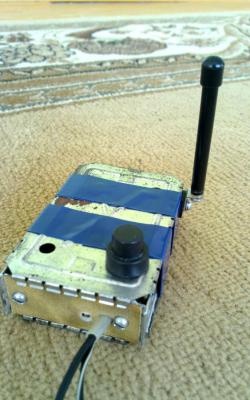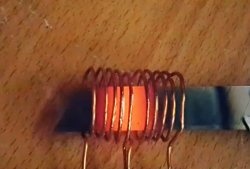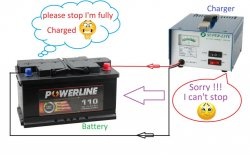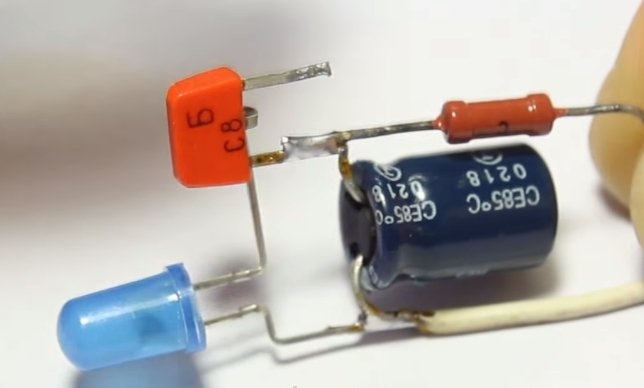
The circuit works well on 12 volts, which should be of interest to motorists. If we take the full range of the supply voltage, then it lies in the range of 9-20 volts. So this device can find a lot of applications.

This is a truly super simple circuit to provide flashing. LED. Of course, the circuit contains a large electrolytic capacitor, which can steal a lot of space, but this problem can be simply solved by using a modern element base, such as an SMD capacitor.
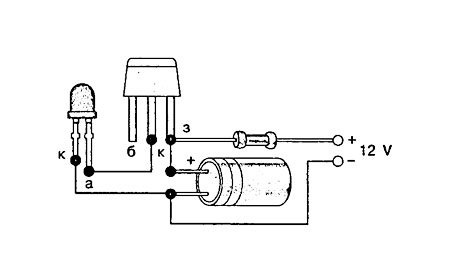
Note that the base of the transistor is hanging in the air. This is not a bug, but a design of the circuit. The base is not used, since the operation uses the reverse conductivity of the transistor.
Such a flasher can be assembled by hanging installation in about fifteen minutes. Put on the heat shrink tube and blow it with a hot air gun. And now you have a generator for blinking LEDs.The blinking frequency can be changed by increasing or decreasing the capacitance of the capacitor. The circuit does not need to be configured and works immediately if the circuit elements are in working order.
The flasher is very economical to operate, reliable and unpretentious.


